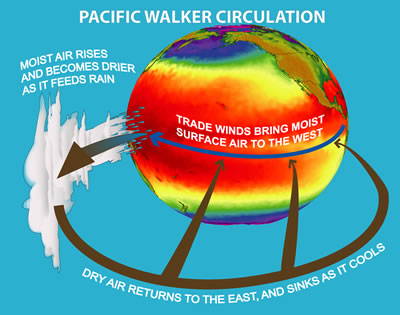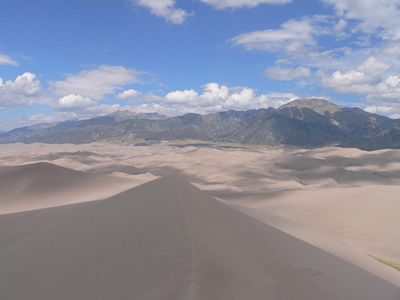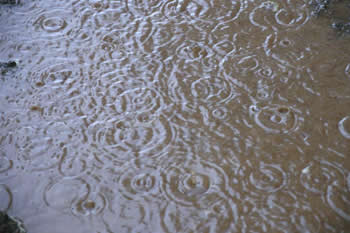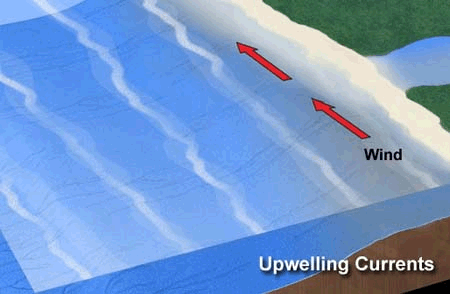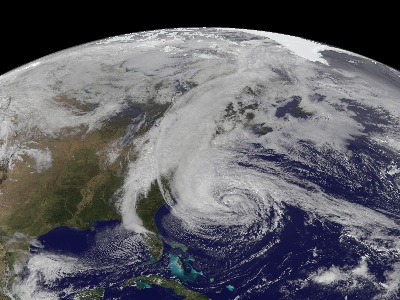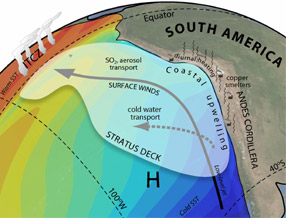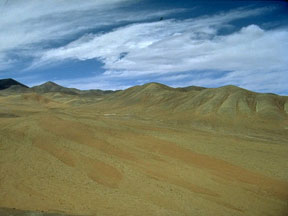Click on image for full size
Image courtesy of NOAA Geophysical Fluid Dynamics Laboratory
Walker Circulation
The Walker circulation is an ocean-based system of air circulation that influences weather on the Earth. The Walker circulation is the result of a difference in surface pressure and temperature over the western and eastern tropical Pacific Ocean. Normally, the tropical western Pacific is warm and wet with a low pressure system, and the cool and dry eastern Pacific lie beneath a high pressure system. The resulting east-west pressure gradient causes a circulation in the atmosphere along the equator, with surface air moving east to west from high pressure in the eastern Pacific to low pressure in the western Pacific. Higher up, west-to-east winds complete the circulation.
The warm waters of the western Pacific Ocean in East Asia heat the air above it and supply it with moisture. On average, the air rises, forms clouds, and then flows to the east across the Pacific, losing moisture to rainfall. The air then sinks off the west coast of South America and air returns to the west along the surface of the ocean, back to the western Pacific Ocean.
The surface wind pattern pushes Pacific water westward so it piles up in the western Pacific Ocean. Waters in the western Pacific are 50-60 cm higher than in the eastern Pacific due to these winds. The Walker circulation also contributes to normal weather conditions in this part of the Pacific Ocean: warm, wet weather in the western Pacific and cool, dry weather in the eastern Pacific.
The Walker circulation reverses every few years, as part of a phenomenon called the El Niño-Southern Oscillation (ENSO). When the Walker circulation weakens, the winds also weaken and the warm water of the western Pacific spreads to the east. These are the conditions we associate with El Niño. During periods when the Walker circulation is particularly strong, called La Niña, the winds are stronger across the Pacific, causing cooler ocean temperatures due to increased upwelling in the eastern Pacific. El Niño and La Niña impact the weather in North and South America, Australia, and Southeast Africa, and can cause flooding, droughts, and increases or decreases in hurricane activity.


